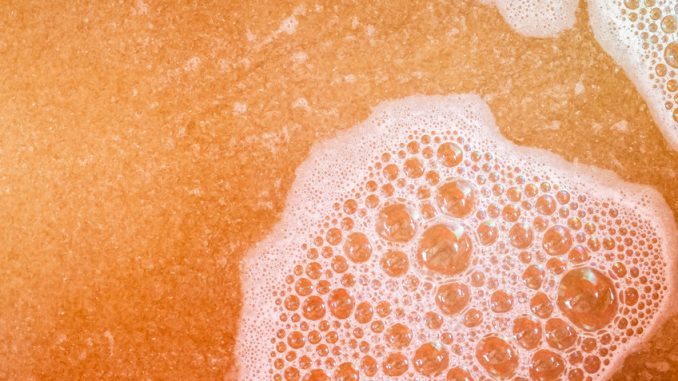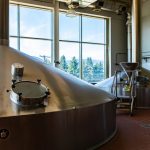
The cold break is an important process in beer brewing. Here we discuss its role. It could be good, bad or indifferent for the brewer but it is an aspect of brewing that needs some careful thought and management because of its impact later on in the clarity of the final brew.
What Is Cold Break?
Cold break is all that precipitated material that comes out of solution when you rapidly cool wort after it is boiled in the mash kettle. The precipitate often looks like a really cloudy beer. Some brewers have described it as cloudy as a thin meat stock or miso soup. The cooled wort is full of particles or flecks floating in the wort. If you stir it these flecks and particles will break up and some can even go back into solution but that is not to be a recommended step.
The cold break is made up of hops, tannins and polyphenols, malt proteins and other insoluble material which was once soluble.
The composition of this cold break depends on the quality of the wort and any other ingredients like malt and hops that have been added during wort boiling.
One of the biggest factors is the type of malt used. A cold break from a properly modified malt will look very different from one malt that has been poorly treated or just under modified.
Crushing the malt has an effect on what turns up in the precipitate. Most wort tannin comes from the malt husks. If the malt husks are crushed more finely it is likely that more tannin will be released and extracted. These will invariably end up in the cold break following mashing and lautering.
Treatment of Cold Break
Cooling then of wort generates cold break. What you do with it depends entirely on how the brewer wishes to exploit this resource.
To remove cold break effectively often involves adding some Whirlfloc, Irish moss or other precipitating agent. Most wort material carries a positive charge so adding a material like a flocculating agent to the cooled wort carries a negative charge. That explains the binding action between precipitate and flocculant and increases the level of clumping. Because of this addition there is a greater falling out of solution of a larger precipitate which can be handled more effectively if that is what is desired.
Some brewers will add untreated cold break back with the recently boiled wort which is now cool because it contains lots of nutrients. It is after all a consequence letting any freshly boiled wort cool down. The precipitates are fatty acids, various nitrogen compounds and even some vitamins and cofactors which the yeast to be added can exploit in metabolism.
Others who are looking for as clear a brew as possible later on will rack off the precipitate as it leaves the kettle. Whatever the case there is always some insoluble material that is carried over into fermentation because no matter how good the siphon valve or ball valve that is used in the transfer to the fermentation vessel, a little always appears to get transferred over. It’s not a big issue though if this small amount is carried on to fermentation.
The cold break then can be removed either by filtration or centrifugation.
Most brewers want a cold break because protein precipitation after immediate cooling of the recently boiled wort means a clearer cleaner beer later on. Simple as that.

Leave a Reply